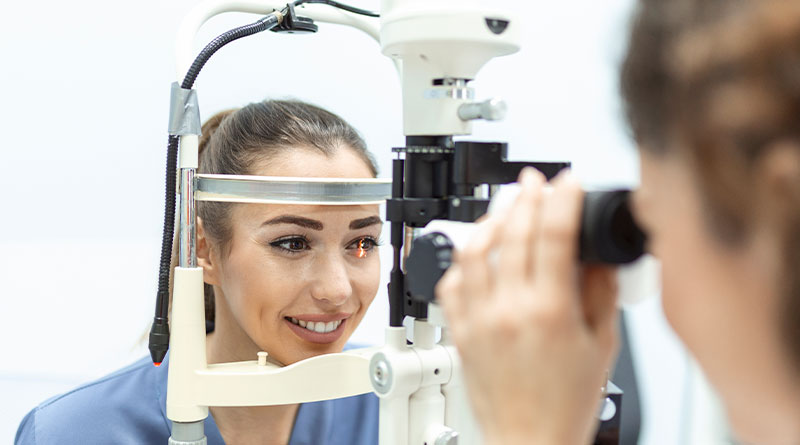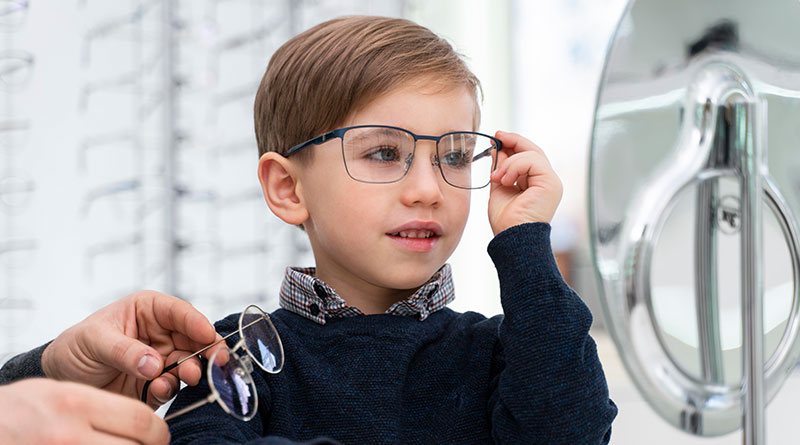According to the Bureau of Labor Statistics, over 20,000 workplace eye injuries occur annually. The use of proper eye protection, such as safety glasses or goggles, can prevent up to 90% of these injuries. Investing in quality eye protection can save businesses money in the long run, as the cost of eye injuries can be substantial. Don’t risk your sight or the safety of your employees – make sure eye protection is a top priority in the workplace.
Also Check: Menstrual Irregularities
In this article, we will discuss the various hazards that can pose a risk to eye health, the types of eye protection available, the benefits of eye protection, the legal requirements, and how to choose and use eye protection.
Eye Hazards in the Workplace
Eye hazards in the workplace refer to potential dangers that can cause eye injuries or vision loss. These hazards can exist in various types of work environments and industries, such as construction, manufacturing, healthcare, and laboratory settings.
Examples of eye hazards in the workplace include flying debris, dust, chemicals, radiation, and biological hazards. In construction, workers can be at risk of eye injuries from flying debris and splashing chemicals. In healthcare, workers can be exposed to blood and body fluids that can lead to the spread of infectious diseases. In laboratories, workers can be exposed to chemical and biological hazards, including fumes and airborne particles that can cause eye irritation or injury.
It is crucial to identify the potential eye hazards in the workplace and take appropriate measures to protect workers’ eyes. This includes providing appropriate eye protection, such as safety glasses, goggles, or face shields, and ensuring workers are trained on how to use them correctly. By taking proactive measures to protect workers’ eyes, employers can prevent workplace injuries and ensure a safe and healthy work environment.
Types of Eye Protection
Different types of eye protection are available to protect the eyes from various types of hazards in the workplace. The type of eye protection used depends on the specific hazard that workers are exposed to and the industry they work in.
Here are the most common types of eye protection used in the workplace:
Safety Glasses
Safety glasses are a type of eyewear that provides protection from impact hazards, such as flying debris, dust, or particles. They have a tough, shatter-resistant lens, and may have side shields for added protection. Safety glasses are commonly used in the construction, manufacturing, and woodworking industries.
Goggles
Goggles are designed to provide a more comprehensive level of protection against chemical and biological hazards, such as splashing liquids or airborne particles. They fit tightly around the eyes and have a secure strap to prevent them from falling off during work. Goggles are commonly used in laboratory settings, healthcare environments, and industries where chemicals or biohazards are present.
Face Shields
Face shields are a type of eye protection that provides full-face coverage and are used for protection against impact and splash hazards. They offer a wider range of protection than safety glasses or goggles, as they protect not only the eyes but also the face and neck. They are commonly used in the welding, construction, and manufacturing industries.
Welding Helmets
Welding helmets are a type of eye protection designed to protect welders from the intense light and heat generated by welding. They have a protective lens that blocks out harmful ultraviolet and infrared light, as well as flying debris and slag. Welding helmets are commonly used in industries such as metalworking and construction.
Also Check: Trust Issues
Full-face Respirators
Full-face respirators are designed to protect workers from inhaling harmful dust, particles, and vapors, and also have an attached eye shield to protect against eye injuries. They provide comprehensive respiratory and eye protection and are commonly used in industries such as chemical manufacturing and healthcare.
Laser Safety Goggles
Laser safety goggles are used to protect the eyes from the intense light and radiation generated by lasers. They are designed with special lenses that block out specific wavelengths of light and protect the eyes from burns or damage. Laser safety goggles are commonly used in the medical and scientific research fields.
Prescription Safety Glasses
Prescription safety glasses are customized eyewear that offers both vision correction and eye protection. They are designed to meet specific safety standards and provide protection from impact hazards and other workplace hazards. Prescription safety glasses are commonly used in industries such as construction, manufacturing, and healthcare, where workers need to wear prescription glasses but also need eye protection.
It is important to choose the right type of eye protection based on the specific hazards present in the workplace. Employers should provide the appropriate type of eye protection and ensure that workers are trained on how to use it properly. This will help prevent eye injuries and ensure a safe and healthy work environment.
How to Choose and Use Eye Protection
Choosing and using the right eye protection is essential to ensure the safety and health of workers in the workplace.

Here are some important tips to consider when selecting and using eye protection:
Identify the hazards: It is important to identify the specific hazards present in the workplace, including the type of hazard and the level of risk. This will help determine the appropriate type of eye protection required.
Select the appropriate type of eye protection: Once the hazards have been identified, it is essential to select the appropriate type of eye protection that provides adequate protection against those hazards. For example, safety glasses may be appropriate for impact hazards, while goggles or face shields may be necessary for chemical or biological hazards.
Ensure the eye protection fits properly: The eye protection should fit properly and be comfortable to wear. It should not be too loose or too tight, as this can affect its effectiveness and cause discomfort or distraction for the worker.
Train workers on how to use eye protection: It is essential to train workers on how to use eye protection properly, including how to put it on and take it off, how to adjust it for proper fit, and how to clean and maintain it. Workers should also be aware of when to use eye protection and when it is not necessary.
Regularly inspect and maintain eye protection: Eye protection should be regularly inspected for damage or wear and tear. Damaged or worn eye protection should be replaced immediately. Eye protection should also be regularly cleaned and maintained according to the manufacturer’s instructions.
Encourage workers to use eye protection: It is important to encourage workers to use eye protection consistently and correctly. This can be achieved through regular training and education, as well as by creating a culture of safety in the workplace.
Also Check: Potential Causes of Low Libido
Consider other safety measures: Eye protection is just one aspect of a comprehensive safety program. Other measures, such as engineering controls, administrative controls, and personal protective equipment, should also be considered to ensure a safe and healthy work environment.
Conclusion
Eye protection is essential for promoting safety and preventing eye injuries in the workplace. By identifying the hazards, choosing the appropriate eye protection, and using it properly, workers can protect their eyes and promote safety. Employers must comply with legal requirements to provide appropriate eye protection, and workers must take responsibility for wearing it. Protect your eyes, and stay safe in the workplace!
In conclusion, eye protection in the workplace is crucial for preventing eye injuries and promoting safety. By identifying hazards, choosing appropriate eye protection, and using it properly, workers can protect their eyes and promote safety. Employers must comply with legal requirements to provide appropriate eye protection, and workers must take responsibility for wearing it. Protect your eyes, and stay safe in the workplace!
FAQs
Q: Why is eye protection important in the workplace?
Ans: Eye protection is important in the workplace because it can help prevent eye injuries and vision loss. The eyes are vulnerable to a wide range of hazards in many industries, and eye protection can help workers avoid serious injuries and health problems.
Q: What are the legal requirements for eye protection in the workplace?
Ans: OSHA requires employers to provide appropriate eye protection to workers who are exposed to eye hazards in the workplace. Employers must also ensure that eye protection is properly maintained and replaced as needed.
Q: How can I encourage my workers to use eye protection?
Ans: Encouraging workers to use eye protection requires a commitment to safety and a culture of awareness and education. Employers can provide regular training and education on the importance of eye protection, as well as incentives for safe behavior and compliance with safety regulations.
Also Check: Treatments for Migraine Sufferers
Q: Are there any specific industries or job tasks where eye protection is particularly important?
Ans: Yes, there are many industries and job tasks where eye protection is particularly important. For example, construction workers, mechanics, and laboratory technicians are all at high risk for eye injuries. Additionally, workers who handle hazardous chemicals, operate heavy machinery, or work with lasers or radiation should also wear appropriate eye protection.
Q: What are the consequences of not using eye protection in the workplace?
Ans: Not using eye protection in the workplace can have serious consequences, including eye injuries, vision loss, and even blindness. These injuries can cause pain and discomfort, as well as prevent workers from performing their job tasks effectively. Eye injuries can also result in lost productivity, medical expenses, and workers’ compensation claims.
Sahil Sachdeva is the Founder of curemedoc.com and a Digital Marketing professional with 6+ years of experience. If you need help in Content writing and want to increase your website ranking, connect with him, as he has some premium websites where you can share blogs with DoFollow links and increase your website’s ranking on Google.



